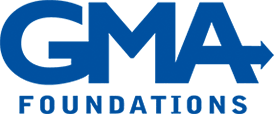
Foundations that have audits or reviews and prepare financial statements in accordance with generally accepted accounting standards (GAAP) face new reporting standards this year. Here, GMA Foundations’ Director of Financial Services outlines the changes most likely to affect a private foundation.
New Financial Statement Standards for Not-for-Profit Entities
The Financial Statement Accounting Standards Board (FASB) issued ASU No. 2016-14, Presentation of Financial Statements of Not-for-Profit Entities, in August 2016 after several years of debate, comment, and revision. Foundations with a year end of December 31, 2018 will be the first to adopt the new standards followed by those with fiscal years ending in 2019.
FASB’s goal in developing the standards was to improve nonprofits’ financial statements and to provide more useful information. The update addresses concerns that the old standards for the presentation of financial statements were inconsistently applied, complex, and failed to provide the information needed to assess an organization’s liquidity. Few of the changes are “accounting” related; rather, they address how a nonprofit’s financial picture is presented.
The following summary of the major provisions of ASU No. 2016-14 should help private foundation trustees prepare for a conversation with their accountant.
Net Asset Classes
The three classes of net assets used in nonprofit financial statements (unrestricted, temporarily restricted, and permanently restricted) have been replaced with two classes of net assets on the statement of financial position and activities: “net assets with donor restrictions” and “net assets without donor restrictions”.
Although the face of the financial statements changes under the new standards, the required disclosures that describe the nature of the net assets, with donor restrictions and releases of donor restrictions, remain the same.
Underwater Endowments
For the small percentage of foundations with endowments, this change affects how endowment funds with a value below the original gift (“underwater endowment”) are presented.

Under the old standard, the value of the original gift was reported in the financial statements regardless of market value, and when the endowment fell below the original gift value, the deficit was absorbed by and reflected as a liability within unrestricted net assets. Under the new standards, this deficit is shown as a reduction of the original gift until the original value recovers. The standard also requires additional disclosures of underwater endowments.
Functional Expenses
All nonprofit organizations are now required to present an analysis of expenses by both their functional and natural expense classifications. The analysis must disaggregate the functional expense classifications by their natural expense classifications.
Functional expenses are considered program, management and general and fundraising. In other words, expenses are grouped in accordance with their “functional” categories. The natural expense categories refer to salaries, benefits, taxes, etc. – a more common sense or natural classification.
Prior to the implementation of these standards, foundations, as a group, reported their expenses in a variety of ways, and some chose not to report their expenses under their functional categories at all. These new standards will likely require foundations to make changes in how they track and report expenses.
Additionally, foundations must disclose the methods used to allocate costs among their program and support functions. Under the previous standards, a boiler plate disclosure alluded to the fact that certain costs were allocated to their functional categories. The new standards require a description of the specific methodology used for each class of expenses.
Liquidity and Availability
The requirement to disclose details about an organization’s liquidity is the most significant and controversial requirement under the new financial statement standards. While most foundations do not have liquidity problems, many charities, especially smaller ones do. In fact, it has been reported that 10% of nonprofits have cash reserves of less than one month.
Foundations are now required to provide information about the liquidity of assets and the maturity of liabilities, including the effects of restrictions and self-imposed limits, by:
- Sequencing assets according to their nearness of conversion to cash and liabilities according to their nearness of use of cash due to maturity
- Classifying assets and liabilities as current and noncurrent
- Disclosing any additional relevant information about the liquidity or maturity of assets and liabilities
In addition, foundations will be required to disclose qualitative and quantitative information about how the organization manages its liquid resources to meet cash needs for general expenditures within one year of the date of the statement of financial position, and whether its financial assets are available to meet those cash needs.
Foundations that issue financial statements will want to be thoughtful about how they comply with this standard. This is a new way of thinking about liquidity that merits substantive discussion.
Statement of Cash Flows
In its initial draft of the new standards, FASB proposed that all GAAP financial statements report cash flows using the direct method. The direct method provides greater transparency about cash inflows and outflows than does the indirect method. After accountants expressed significant concerns, this provision was withdrawn.
The indirect method for reporting cash flows continues to be allowed. The direct method of reporting is “encouraged” by FASB although it is not required.
Preparing a direct method cash flow statement is much more tedious because the information needed is not readily available in the chart of accounts. In addition, if the direct method is used, disclosure of cash flows from operating activities must be presented on the indirect method. This double preparation makes the direct method less attractive to preparers of financial statements.
Investment Return
Changes in investment return reporting may impact larger foundations that rely on internal staff for investment related functions. This is because investment return must now be reported net of both related external and internal expenses. Previous standards required only an off-set of external expenses.
Internal costs include costs associated with the employees responsible for developing and executing investment strategy, as well as other allocable costs associated with internal investment management and selecting, supervising, and monitoring the external investment management firms. Note that direct internal investment expense includes only costs incurred in generating investment return and does not include costs associated with accounting for investment activity.
Compliance with New Financial Statement Standards
We recommend that trustees seek foundation-specific guidance for applying these new financial statement standards. The financial services team at GMA Foundations is proactive and works closely with our clients’ accountants to ensure compliance with FASB standards and to coordinate the preparation of financial statements that are straightforward and meaningful.
This outline is written with the private foundation in mind. Of course, grantmakers evaluating the financial statements nonprofit organizations prepare for an audit will see similar changes in reporting. The National Council of Nonprofits offers an overview in Understanding the New FASB Accounting Standards.
GMA’s Director of Financial Services, Alfonso Perillo CPA, welcomes your questions or comments. Reach him by email aperillo@gmafoundations.com or phone (617) 391-3074.
